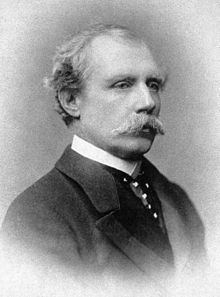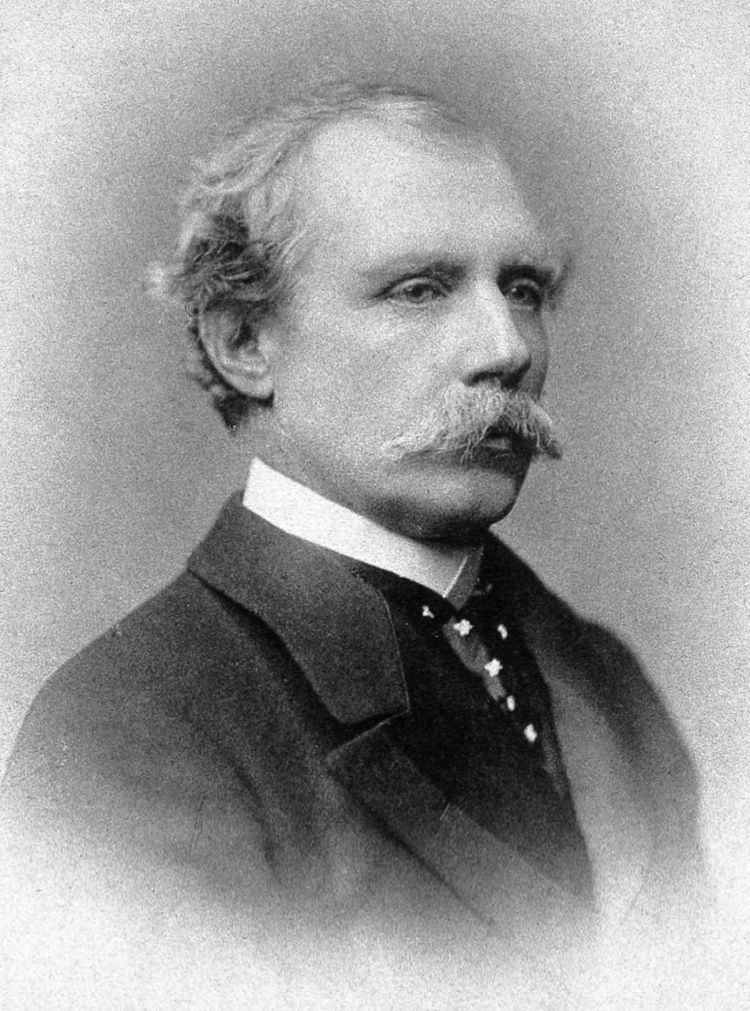Predecessor James of Sarawak Role White Rajahs Successor Vyner of Sarawak Spouse Margaret Brooke (m. 1869) | Parents Emma Johnson Name Charles Rajah | |
 | ||
Reign 3 August 1868 – 17 May 1917 Born 3 July 1829Burnham-on-Sea ( 1829-07-03 ) Issue Vyner of Sarawak and others Children Charles Vyner Brooke, Bertram Willes Dayrell Brooke Grandchildren Anthony Walter Dayrell Brooke Similar People James Brooke, Charles Vyner Brooke, Anthony Walter Dayrell Br, Reginald Brett - 2nd Viscount, William of Wykeham | ||
Charles Brooke, Rajah of Sarawak, GCMG (Charles Anthoni Johnson Brooke; 3 June 1829 – 17 May 1917), born Charles Anthoni Johnson, ruled as the head of state of Sarawak from 3 August 1868 until his death. He succeeded his uncle, James Brooke, as the second White Rajah of this small country on the coast of Borneo.
Contents

Biography
Charles was born in Berrow Vicarage, Burnham, Somerset, in England, to the Rev. Francis Charles and Emma Frances Johnson. Emma Frances Johnson, née Brooke, was the younger sister of James Brooke, the first Rajah of Sarawak. In addition to Charles, Francis and Emma had other children: Captain John Brooke Johnson (1823–1868) (later Brooke Brooke), Mary Anna Johnson (b. 1824), Harriet Helena Johnson (b. 1826), Charlotte Frances Johnson (b. 1828), Captain (William) Frederic Johnson (b. 1830), Emma Lucy Johnson (b. 1832), Margaret Henrietta Johnson (1834–1845), Georgianna Brooke Johnson (1836–1854), James Stuart Johnson (1839–1840), and Henry Stuart Johnson (b. 1841).
Charles was educated at Crewkerne Grammar School and entered the Royal Navy. He adopted his uncle James's name and entered his service in 1852 as Resident at the Lundu station. In 1865, James named Charles as his successor.
Charles married Margaret Alice Lili de Windt at Highworth, Wiltshire on 28 October 1869; she was raised to the title of Ranee of Sarawak with the style of Her Highness on the same day. They had six children, three of whom survived infancy:
However, Charles also had another son, Esca Brooke (1867–1953), born before his children with Margaret de Windt, the result of a marriage with a Malay woman known as Dayang Mastiah. Esca was later adopted by Rev. William Daykin, moved to Canada, and adopted the name Brooke-Daykin.
Charles resigned his commission in the Royal Navy in 1861 and continued the work his uncle had started, suppressing piracy, slavery, and head-hunting, while encouraging trade and development and expanding his borders as the opportunity arose. In 1891 he established the Sarawak Museum, the first museum in Borneo. Brooke founded a boys' school in 1903, called the 'Government Lay School', where Malays could be taught in the Malay language. This was the forerunner of SMK Green Road. By the time of his death, Britain had granted Sarawak protectorate status, it had a parliamentary government and a railway, and oil had been discovered.
All three White Rajahs are buried in St Leonard's Church in the village of Sheepstor on Dartmoor.
Honours
British Honours
At least one Bornean species was named in Brooke's honour:
